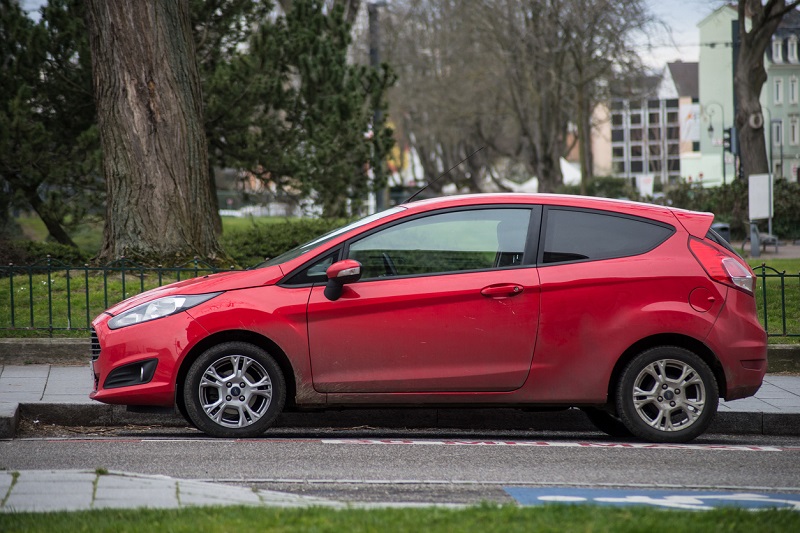What is comprehensive car insurance?
Learn what comprehensive car insurance covers, how it compares to other types, and why it might be the right choice with 1st Central.

Comprehensive Car Insurance: Our Guide
Most drivers assume “comprehensive” means “everything” - but that’s not always the case.
Choosing the right level of protection can make a big difference - not just to what you pay, but how supported you feel when things go wrong.
Comprehensive Car Insurance offers the most complete protection available. But that doesn’t mean it includes everything.
In this guide, we’ll break down what it does and doesn’t include, how it compares to other options, and who it’s right for. If you're weighing up your choices, you can compare our car insurance products here
Guide highlights:
Comprehensive Insurance protects both you and others
It is often required for leased or financed vehicles
Comprehensive insurance includes extras like accidental damage
It doesn’t cover normal wear and tear, or mechanical breakdowns.
It can offer better value than Third Party Insurance - in some cases
What is Comprehensive Car Insurance?
Comprehensive Car Insurance is the highest level of coverage available, protecting both your own vehicle and others in most situations.
Unlike Third Party or Third Party, Fire and Theft, this type of policy looks after your own car if it’s damaged - whether that’s in a crash, a car park knock, or even a storm - and may in some cases cover your medical expenses.
It also includes everything you’d get from Third Party Cover, like damage to someone else’s car or injuries to others caused in an accident.
If your car is leased or financed, lenders usually require you to have Comprehensive Car Insurance to protect their interest in the vehicle.
Comprehensive vs Third Party Insurance?
H3 - There are three main levels of car insurance:
Third party: Pays out for other people’s damage and injuries, not your own. Read more in our Third Party Insurance guide.
Third Party, Fire & Theft: Adds protection for your car in some cases if it’s stolen or catches fire. This is the minimum level of coverage available from 1st Central.
Comprehensive: Includes all of the above, plus damage to your own vehicle and medical expenses for some comprehensive cover - even if you’re at fault.
What’s included with each insurance type?
Third Party |
|
Third Party, Fire & Theft |
|
Comprehensive |
|
Pros and cons of Comprehensive vs Third Party insurance:
| Insurance | Third Party | Comprehensive |
| Pros |
|
|
| Cons |
|
|
Why Choose Comprehensive Car Insurance?
Some reasons for considering Comprehensive Car Insurance are:
Drive a high-value or new vehicle
Commute long distances or travel often
Want protection if you're at fault
Some policies include extras like courtesy cars, windscreen cover, and more
What’s Included (and Excluded) with Comprehensive Car Insurance
Typically Covered with Comprehensive Car Insurance
Accidental damage - even if it’s your fault
Theft, vandalism, or attempted theft
Fire and storm damage
Damage to others (vehicles, people, property)
Driving abroad
Free courtesy car
Hotel expenses
What Might Be Covered with Comprehensive Car Insurance
Driving other people’s cars (unless stated)
Child seat protection
Personal belongings protection
Vandalism and windscreen cover
Medical expenses
What is definitely Not Covered with Comprehensive Car Insurance
General wear and tear
Mechanical breakdowns
Claims without proof or required documentation
Extras like legal add-ons, unless you’ve chosen to include them
You can compare our policies here to see what’s included with each level of insurance.
What Affects the Cost of Comprehensive Car Insurance?
There are a huge number of factors that go into shaping your car insurance premium.
Including:
The type, age and value of your car
Your age, postcode and driving history
How much excess you choose to pay
Any optional add-ons
Whether you use telematics or a black box
Discounts, like a no claims bonus or multi-car discount
To see what your policy might cost, head to our car insurance pricing page. Looking for a comprehensive plan that works for your lifestyle? Get a quote with 1st Central today.
FAQs
Is Comprehensive Insurance better than Third Party?
In many cases, yes - it offers more protection and can sometimes be cheaper depending on your driving profile.
Can I drive any car with Comprehensive Insurance?
Not necessarily. Some policies include a ‘driving other cars’ extension, which you can select when buying your insurance, but it’s not always guaranteed, and is usually intended for emergencies. Even if driving other cars (DOC) is included, it normally provides Third Party Only (TPO) cover. This means you would not be covered for damage to the car you are driving. Always check your policy documents and the policy wording.
Does comprehensive mean I can drive someone else’s car?
No, not by default. Comprehensive refers to your own insurance - it doesn’t automatically extend to other cars. Driving another person’s car is only possible if your policy includes the DOC extension, and even then, cover is usually limited to third party only cover.
Is Comprehensive Insurance worth it for older cars?
It depends on the car’s value and any risks associated with driving it. For low-value vehicles, Third Party may be more appropriate - but always compare your insurance types, and consider other factors - such as medical expenses, personal belongings cover, and accidental damage - before making a decision.